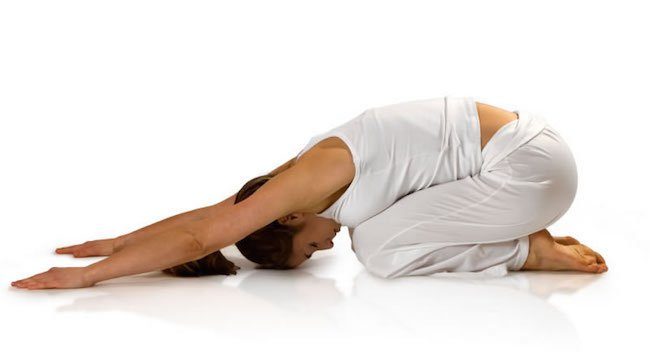
Exercise offers many health benefits that go beyond weight loss. Unfortunately, according to the CDC, about half of US adults do not meet aerobic exercise guidelines. Adults should get at least 2.5 hours a week of moderate aerobic exercise or 75 minutes a week of vigorous exercise.
If you desire weight loss, your exercise recommendations can be higher.
Aerobic exercise is considered continuous exercise that increases heart rate and breathing. Aerobic exercise provides cardiovascular benefit and can provide a high calorie burn.
Moderate aerobic exercise means you can still carry on a conversation with someone while you’re exercising; you are not out of breath. You could stay at that intensity for a while.
Vigorous exercise has a higher intensity. You may only be able to get out a few sentences at a time before coming winded. You can’t maintain that intensity for a long period of time.
How many calories you burn during aerobic exercise can depend on: gender, fitness level, body size and genetic factors.
Running is one of the highest calorie burning aerobic exercises.
Therefore, many people choose to run for exercise because they enjoy it and/or it offers a high calorie burn.
Be wary of relying on calorie burn information from some fitness devices; research suggests some of these estimates may be inaccurate.
Difference between running and walking calorie burn
You don’t burn the same amount of calories per mile from walking and running. In other words, it’s not just the distance that determines the amount of energy you need.
As Dr. Melina Jampolis suggests in a CNN Health article (1), how long you exercise, how hard/fast you exercise and how much you weigh are larger determinants of calories burned instead of total distance covered.
Therefore, since running is a higher intensity exercise, you will burn more calories running compared to walking.
However, if you are not able to run, walking is still a great form of exercise. You just may have to walk a little more for a higher calorie burn.
Calorie estimates for running 1 mile
There are many calorie estimates and fitness apps that can estimate how many calories you burn during exercise. Keep in mind, these are all estimates. There may be some individual variance.
The American Council on Exercise (ACE), breaks down calories burned per minute based on body weight.
Body size is a large factor for calorie burn during exercise. So, keep in mind as someone goes through weight loss, their calorie burn actually goes down as body size shrinks.
ACE suggests for someone weighing around 120 pounds, running can provide a calorie burn of about 11.4 calories per minute.
Someone who weighs around 140 lbs may burn around 13.2 calories per minute, 160 pounds may burn around 15.1 calories per minute and someone around 180 pounds may burn 17 calories per minute.
Researchers from Syracuse University analyzed how many calories 12 men and 12 women burned when walking and running a mile.
On average, men burned about 124 calories per mile running and about 88 calories walking. The women burned about 105 calories running and 74 calories walking (2).
So, according to these results, men averaged about 124 calories per mile and women about 105 calories burned per mile.
Some estimates may round these to an average of burning about 100 calories per running mile.
However, keep in mind body size and running intensity is a large factor for any calorie estimate.
Calorie estimates are not always accurate
Millions of people wear some sort of fitness device that tracks calorie burn during exercise.
However, is this data accurate? Researchers from Stanford University (3) evaluated seven fitness devices for heart rate and calorie expenditure accuracy.
The good news is 6 out of 7 devices monitored heart rate accurately with less than 5% error.
However, researchers found none of the seven devices were accurate for estimating calorie burn.
Researchers found the accuracy of devices to be off between 27-93% when tracking calories burned during exercise.
Fitness devices try to estimate calories burned from different algorithms. They are not a direct measurement like measuring heart rate. This may be one reason why there is such high variance with measuring calorie expenditure.
Researchers suggest from this study you shouldn’t base your calorie intake from what a device tells you how many calories you burned during your workout because chances are it may not be accurate.
However, heart rate tracking seems to be accurate for the devices tested in this study. The bottom line is using fitness apps and devices may help you track exercise data, but keep in mind the calories burned is just an estimate.
Increase your intensity for a higher calorie burn
How can you burn more calories during running? Run faster. No matter your body size, age or gender, running faster will burn more calories than running slower.
If you run consistently at the same pace, your body gets fairly efficient with your same running pace.
Changing up your running intensity can increase your calorie burn.
You don’t have to sprint a mile to increase your calorie burn. You could just gradually run faster than you normally do a few times per week or incorporate some interval training.
For example, instead of running your usual pace, you could run fast for 1 minute, followed by a slow jog or walk for 2 minutes and repeat until desired time length.
How training impacts calorie burn during running
The more you run, the more your body can get efficient at energy use during running. A study (4) from the 1960’s showed trained athletes compared to non-athletes burn about 5-7% fewer calories during running.
Their bodies are more efficient at using fuel for exercise. Does this mean it’s advantageous to run only once in a while instead of consistently? No! This lowered calorie burn is slight, and the more you exercise the more your muscles can get efficient at using fat as a fuel source.










